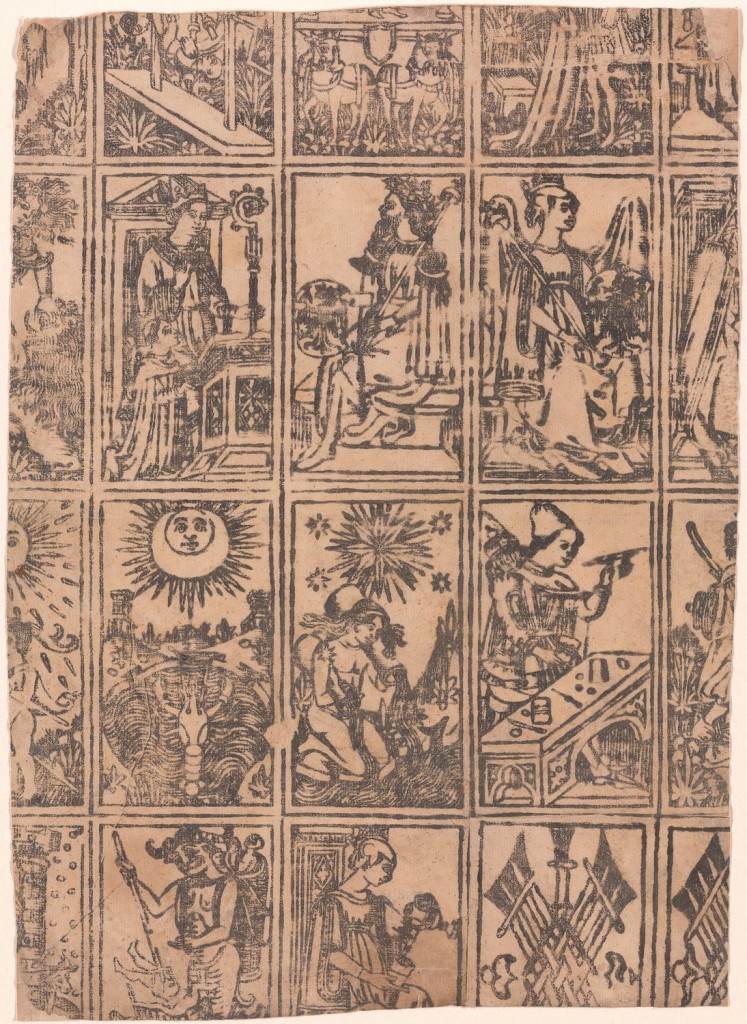Yale Beinecke Italian deck (circa 1500’s)
09.03.2016
Decks, Pre-history
This Italian deck from the 1500’s laid the foundation for the Marseilles tarot variants (200 years later). This sheet lies in the Beinecke Library, as part of the Cary Collection. Unfortunately there is only one sheet, and this is a one of-a-kind item (so if you see one on eBay for $500 you probably shouldn’t buy it). You can read up more about it at Yale.
A few bits worth noting here:
- The horses of The Chariot (top center right) are mirror images of each other. The effect is heightened by the fact that they are facing away from the center of the card slightly. Later Comte. De Saint-Germain, and after that Waite would change the horses to sphinxes without altering the basic feel of the detachment. It speaks of physical nonsense fused with iconographic symbolism that speaks to those trained to see the world through the eyes of the Western mystery school whose logic they have made their own.
- The Empress and Emperor (2nd row, center right) mirror each other in this deck, but both have the essential pose that came to us unchanged by Mathers or Waite. The most telling is the Emperor’s crooked leg and tucked foot (reminiscent of The Hanged Man). This is not some metaphysical secret. It is what the artist drew for a game of cards in the 1500s, over 200 years before anyone thought of using these cards for divination.
- The Strength card (here: “Fortitude”) depicts a female divinity/anthropomorphized virtue *gently* taming the savage beast (lion). These images “are ancient” in the sense that they have hardly changed since 1500, but in The Papess we can see how switching gender and making the cardinal figure less friendly greatly changes the perceived meaning of the card to students of divination.
- Bagatto, Star, and Moon; all of these cards are identical to what Waite set down, considering the slight changes in pose and style that happens when artists copy artists, who copy artists, for 400 years. Note that those two “mysterious towers” and the central path (see also the Waite-Smith Ace of Coins) appear 400 years before Waite had Pam insert them into his vision of the tarot. Here they are just buildings, not some faux alchemical secret code that only the author of some blog or book has unearthed during a meditation on the Great Pyramid. Apologies to true believers, but this image makes it painfully clear that these are just buildings, and not even the only ones in the picture.




